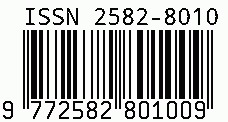
International Journal of Leading Research Publication
E-ISSN: 2582-8010
•
Impact Factor: 9.56
A Widely Indexed Open Access Peer Reviewed Multidisciplinary Bi-monthly Scholarly International Journal
Plagiarism is checked by the leading plagiarism checker
Call for Paper
Volume 6 Issue 4
April 2025
Indexing Partners



















Design and Control of Innovative Microgrids for Energy Management
| Author(s) | Jaymin Pareshkumar Shah |
|---|---|
| Country | India |
| Abstract | The increasing need for reliable, efficient, clean energy has led to an interest in the latest microgrid designs and control methods. Microgrids or micro-energy grids are localized energy systems that can operate both connected and disconnected from the primary distribution grid. This allows for improved energy management usingintegrated distributed energy resources (DER) as renewable energy sources, energy storage systems, and demand response technologies. This research report examines the design principles and control methods of new microgrids, taking into account their ability to maximize energy delivery, cut down on emissions of CO2, and increase the resilience of the power grid. By examination of multiple design interventions and control algorithms, the study seeks to develop architectures that can be used in future microgrid projects. The first part of the paper provides a general description of the main constituents of advanced microgrid systems. It discusses the significance of applying renewable energy technologies, dimensional solar photovoltaic (PV) panels, wind turbines, and biomass to energy storage solutions, including batteries and flywheels. Additionally, the paper looks at the part of improved communication and info technologies (ICT) that allows for real-time tracking, information assessment, and decision-making within microgrids. Using case studies and comparison, the viability of different microgrid configurations is demonstrated, affecting parameters such as power system size, location, and energy requirement of communities. The second part is concerned with advancing advanced control techniques to control and manage the operation of the microgrids efficiently. It covers several control architectures, such as hierarchical control, decentralized control, and model predictive control (MPC), stressing their merits and drawbacks in several operational cases. The paper also examines integrating artificial intelligence (AI) / machine learning (ML) into the control systems to boost the predictive features further and optimize energy management processes. More broadly, this work aims to provide valuable insights into innovative microgrid design and control, thus offering suggestions to policymakers, energy planners, and researchers to advance a transition to sustainable and reliable energy systems. |
| Keywords | Microgrids, Energy Management, Innovative Design, Control Strategies, Distributed Energy Resources, Renewable Energy, Energy Storage, Energy Efficiency, Demand Response, Hierarchical Control, Decentralized Control, Model Predictive Control, Artificial Intelligence, Machine Learning, Sustainable Energy, Greenhouse Gas Emissions, Power System Resilience, Real-Time Monitoring, Communication Technologies, Energy Distribution, Energy Optimization, Case Studies, System Configuration, Energy Needs, Predictive Capabilities, Community Energy, Energy Transition, Smart Grids, Environmental Impact, Energy Systems |
| Field | Engineering |
| Published In | Volume 2, Issue 12, December 2021 |
| Published On | 2021-12-08 |
| Cite This | Design and Control of Innovative Microgrids for Energy Management - Jaymin Pareshkumar Shah - IJLRP Volume 2, Issue 12, December 2021. DOI 10.70528/IJLRP.v2.i12.1465 |
| DOI | https://doi.org/10.70528/IJLRP.v2.i12.1465 |
| Short DOI | https://doi.org/g898qv |
Share this


CrossRef DOI is assigned to each research paper published in our journal.
IJLRP DOI prefix is
10.70528/IJLRP
Downloads
All research papers published on this website are licensed under Creative Commons Attribution-ShareAlike 4.0 International License, and all rights belong to their respective authors/researchers.

